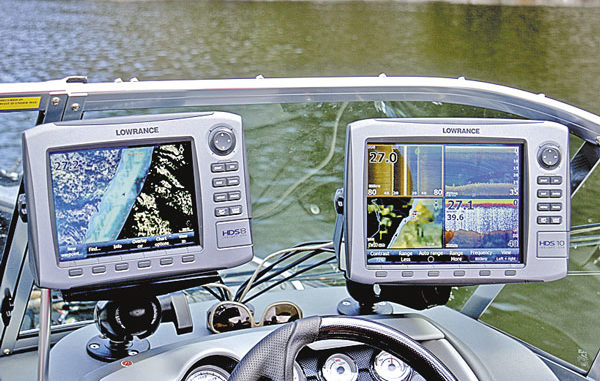
The secret to eliminating 90 percent of electronics problems is getting the installation right.
Last month’s column reported that most of us install our DSC-equipped VHF radios in a manner that prevents them from saving our lives. It occurred to me while writing the piece that part of this potentially fatal problem may just be the result of misplaced trust. At least some of us may have paid someone else to install our radio — someone who didn’t do it right.
Sloppy, less than perfect or absolutely poor installations have been responsible for more than 90 percent of the operational problems experienced with electronics for at least the three decades that I have been writing about them. The great majority of problems with sonar units, for instance, can be traced to a transducer mounting angle or mounting location that doesn’t allow it to work properly, especially at high speeds. In fact, there are so many ways to screw up a transducer installation that some consider the ability to do it correctly a black art. And connecting a sonar unit’s power cable to a crowded bus bar or to a battery that also powers an electric trolling motor can cause serious screen interference. You also don’t want to install a GPS antenna module within the transmit pattern of a radar scanner. The list goes on and on, and it can leave you wondering how to get any piece of electronics installed right the first time.
One choice is to do it yourself. If you are comfortable with all the tools and procedures required and can follow the manufacturer’s installation instructions exactly, you should be all right. Be wary of advice you get on the Internet unless it comes directly from a manufacturer’s customer service department or from an official company representative who hangs out at your favorite marine electronics forum. Anyone can represent himself as an expert, and bad advice abounds.
Having a marine dealer install your DSC radio or other electronic device should guarantee that it will be done right, but, unfortunately, it doesn’t. The skill levels of mechanics and technicians can vary greatly from dealer to dealer, and it is a good idea to do a little checking before you pay big bucks to have something installed. You can ask the dealer for references from customers who have had similar installations done. A good dealer should understand your concern, not take offense and provide them. Or you can seek help from an NMEA-rated Master Dealer.
The National Marine Electronics Association has a new program that can help you find the local dealer most likely to do it right the first time. NMEA has led the way in establishing technical standards for data exchange (networking) in marine electronics with the widely accepted NMEA 0183 and NMEA 2000 protocols. The organization also sets certification standards for marine electronics technicians, and has incorporated them into its new Master Dealer Program. A dealership must have at least one Certified Marine Electronics Technician (CMET) and meet requirements for technical education and proper use of specific test equipment to qualify as a NMEA Master Dealer. A point system based on successfully completed technical courses is used to determine a dealership’s eligibility.
The CMET classification, which has been around for almost two decades, is awarded to technicians who pass a stringent test examining virtually all aspects of marine electronics. Other classifications that count toward a dealership’s Master Dealer eligibility include Marine Electronics Installer (MEI) and Advanced MEI.
The Master Dealer Program focuses not only on technical proficiency and ongoing education, it also includes customer service. Dealers participating in the program will provide customers with a Consumer Bill of Rights, a document outlining what customers can expect from the dealer and how to file a complaint if they are dissatisfied. Complaints will be reviewed by the NMEA Master Dealer Certification Committee. If a complaint is considered justified, the committee will notify the dealership that it has 60 days to resolve the issue with the customer. If the issue is not resolved to the customer’s satisfaction, the NMEA national office will step in. A dealership’s Master Dealer status can be revoked if the issue remains unresolved.
So if you want something installed right the first time, you can do it yourself if you’re able, have it done by a dealer you know has a proven reputation or check with local dealers until you find one participating in the NMEA Master Dealer Program.


